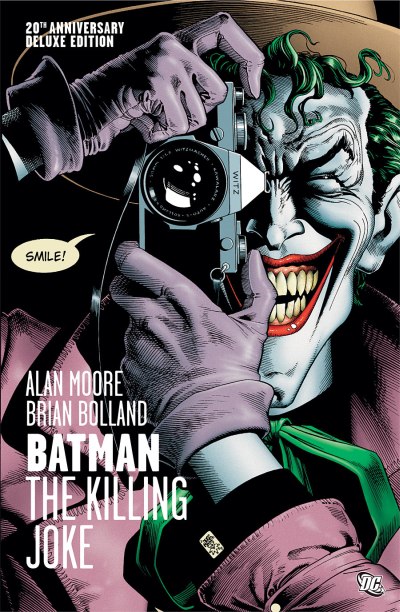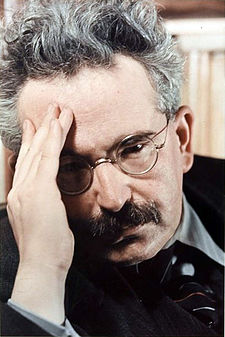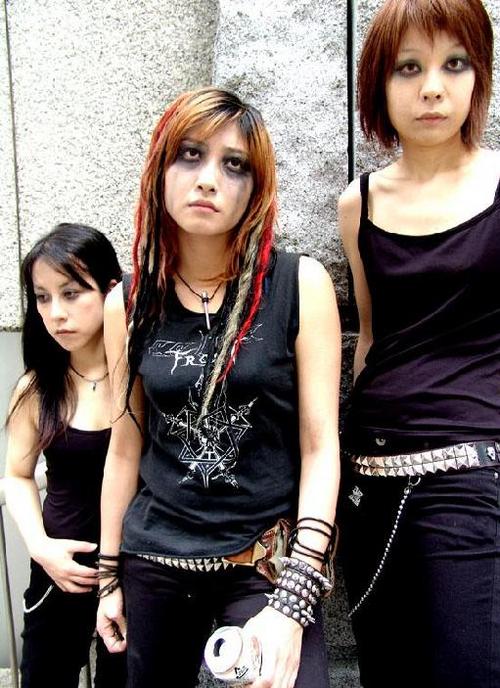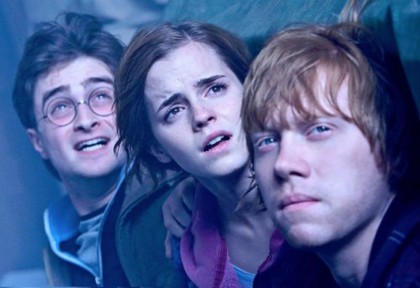Prompted by Osvaldo Oyola’s essay earlier this week, I moved about six boxes of clothes and a paper cutter out of the closet in order to get at my comics collection and reread Alan Moore and Brian Bolland’s The Killing Joke.
And no, it wasn’t really worth it. The comic was a disappointment when I first read it upon its release in 1988, and 25 years later it continues to underwhelm. The Joker’s sad sack origin hasn’t gotten any less pro forma melodrama with the passage of time, while the visual rhymes and formal density that served Moore so well in Watchmen here simply inflate a standard genre exercise in good guy/bad guy pulp doppelganger Manicheanism with gratuitous pomposity, robbing it of charm without adding any weight. The sexualized crippling/rape of Barbara Gordon is, as Osvaldo says, a low point, but it’s also of a piece. Extra violence, extra sex, extra unpleasantness, extra formal trickery and the odd leaden bit of wordplay; it’s all there to desperately claim significance via special pleading, rather than by actually writing a thoughtful story. Bang, Pow, Batgirl shot through the spine, comics not just, etc.
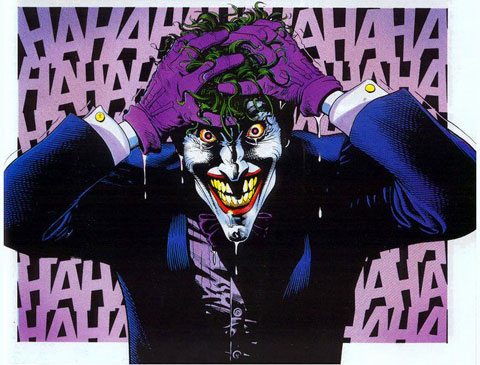
There was one pleasant surprise, though; Brian Bolland’s art. I’d always thought of him and Watchmen artist Dave Gibbons as more or less interchangeable, but in fact Bolland’s work is a lot more fun to look at. His faces have a nice plasticity and solidity; a realism shading into cartoonish grotesque which fits the Joker nicely — and suggests the throwaway EC comics horror dreck hiding beneath Moore’s high-falutin’ script. In some sense, it makes you wonder whether the problem with The Killing Joke is that Bolland is too good, his enthusiastic mastery pulling Moore by the collar into a farrago of pulp, just like those grossly offensive dwarves pull Gordon onto the train to view a cornucopia of sadistic incest torture porn. Much of Moore’s career has been a sometimes winning, sometimes losing struggle with genre, and in this case genre appears to have teamed up with Bolland to strip him naked and kick his sorry ass. Then he rose up with his hands on his head, giggling maniacally and burbling about how cool it would be to have Boland draw circus freaks and sexual assault — all for profound philosophical reasons, of course.
Be that as it may, Boland adds significantly to the weirdest, most disturbing moment of the comic.
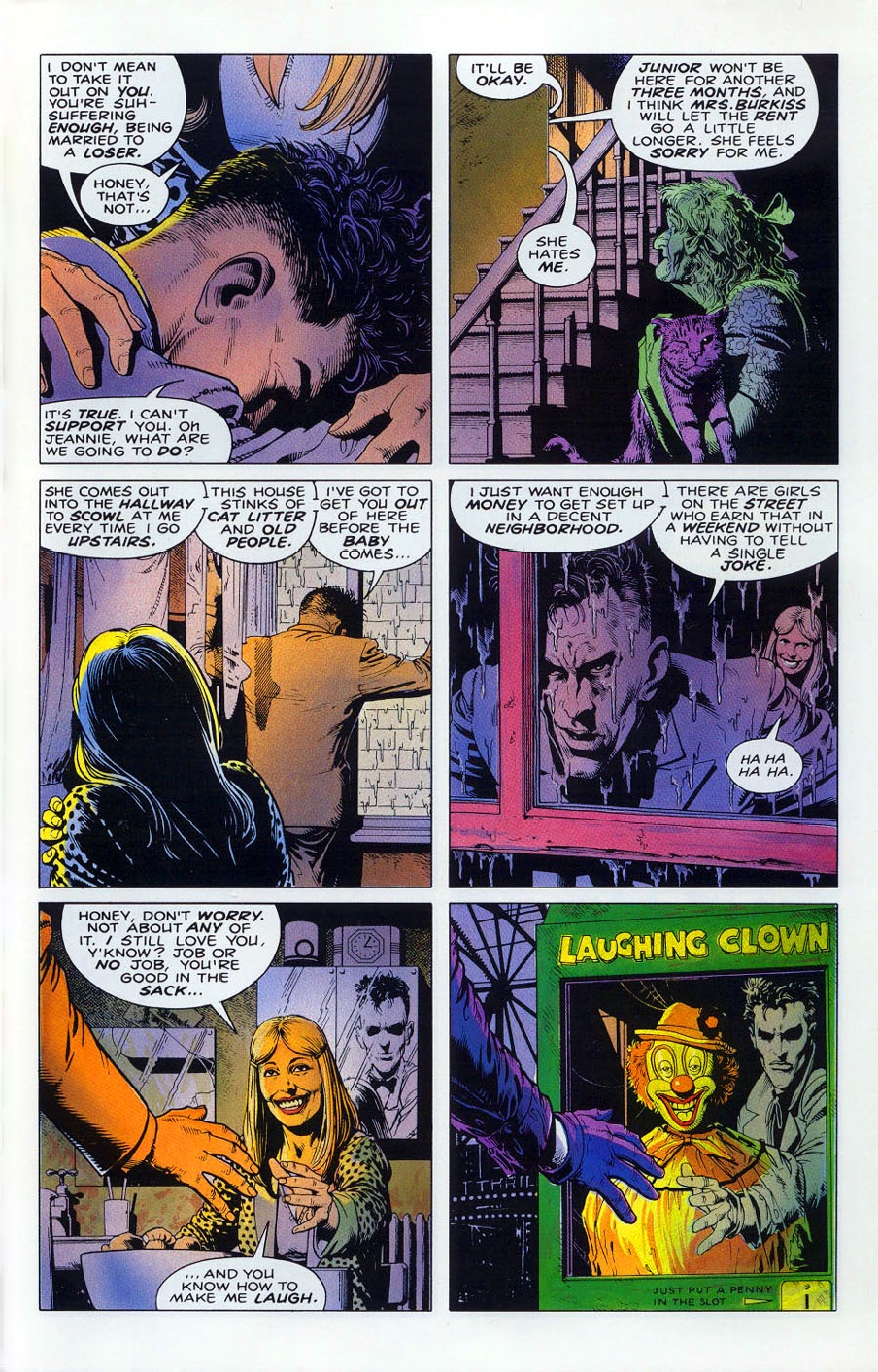
That’s the Joker in his sad sack pre-Joker days, talking to his pregnant wife about how he’s once again failed to get a gig as a comedian. He makes some bitter, crude remark about how girls on the street can make more money than him — and his loving, long-suffering, nurturing wife cracks up. She finds bitter allusions to prostitutes funny, and tells him he’s good in the sack as she reaches for him with a bizarrely exaggerated clown grin.
On the one hand, the grin is there to supply the transition to the laughing clown in the next panel. But it also makes the wife the ur-Joker — the one who finds (her husband’s) suffering and (female) degradation funny, and the one with the demon’s grin. Boland really sells that too; I didn’t remember the dialogue here at all, but that feral, toothy, malevolent smile stayed with me across the decades. Pre-Joker’s hollow, confused look in the mirror is also perfect — he doesn’t look like a man being comforted by his wife. He looks like the terrified victim who suddenly realizes the evil spirit has possessed his love one, and is about to devour him. Osvaldo notes Joker’s queerness — I think that queerness is here presented, specifically, as transvestism. The Joker is taking the place of his wife, or his wife (who we later learn dies in a freak accident) is possessing him.
That sequence seems like a tell; a quick conflation of sex, femininity and terror which suggests that the assault on Barbara Gordon isn’t an accidental, unnecessary indiscretion, but rather a condensation of the book’s central obsessions. In the panel before she’s shot, Barbara too wears that weird Joker grin, her hand extended as Joker’s wife’s hand was extended, the coffee-cup echoing the pencil cup in the other image. Thus Joker is both his wife and the murderer of his wife; the sexualized, uncanny woman brings upon herself vengeance for her wrongness. As in Junji Ito’s Tomie stories, the female ensorcels men, and what she ensorcels them to do is murder her.
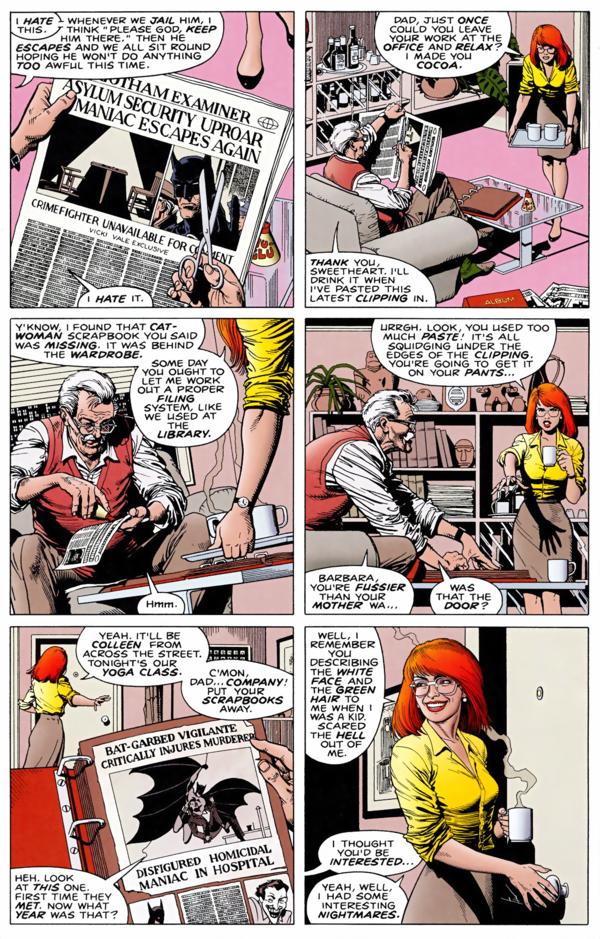
Ito’s stories present his horror and lust — or his horror of lust, or his lust for horror — without apology. Not so Moore, who wants us to believe that he didn’t really want to show us those pictures of Barbara Gordon, or that he doesn’t really enjoy all those gruesome rictus grins on the corpses, or that he didn’t really want to off the Joker’s wife. Moore’s rooting for sanity and Gordon and Batman and reconciliation and rehabilitation along with the rest of us, right? The real killing joke, maybe, is that it doesn’t matter whether Batman kills the Joker, or Batman kisses the Joker. The structure and the end aren’t important. Instead, what matters here are those women grinning and asking for sex and death, the genre pleasures that make us smile.
